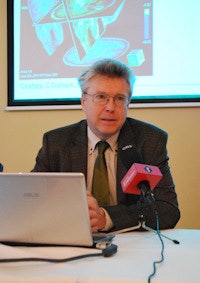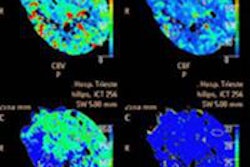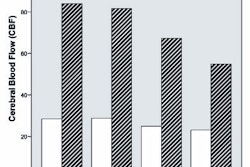
Strokes in younger people tend to be overlooked, or symptoms are being misinterpreted, Dr. Franz Fazekas, head of the neurology department at the Medical University of Graz in Austria, reported in a large-scale European study presented at this week's European Neurological Society (ENS) meeting in Prague.
In the "Stroke in young Fabry patients study" (SIFAP), 3,000 people between 18 and 55 years of age, from 15 European countries, underwent MRI examinations. Those examined had recently suffered either ischemic strokes or a transient ischemic attack (TIA).
"We found that almost a quarter of the subjects had previously suffered a cerebral infarct. Old infarcts were even found among 18.8% of those who never before had noticed any signs of a stroke," said Fazekas, past president of the Austrian Society for Neurology and the Austrian Society for Stroke Research.
"Strokes in younger people probably proceed 'silently' in many cases, or so atypically that one doesn't think of a stroke. In the future, that needs to be taken into account more in clinical practice. And suspicious symptoms should more frequently serve as an indication for an MRI brain scan," he noted.
 Studying age-related brain changes in combination with neuroimaging tools like MRI and PET are among the research interests of Dr. Franz Fazekas.
Studying age-related brain changes in combination with neuroimaging tools like MRI and PET are among the research interests of Dr. Franz Fazekas.The study also revealed a more frequent manifestation among younger men of stroke in the supply region of the posterior cerebral artery, and this needs to be researched further, Fazekas said. Their occlusion typically leads to failure of the visual field of the opposite side and also to cognitive and impaired consciousness. In particular, clarification is needed about whether or not this increased frequency is associated with a case history of migraine.
The causes of stroke are diverse among younger people, i.e. those aged between 18 and 55, according to the World Health Organization's definition. The observed high numbers in the study of lacunar infarcts suggests the importance of vascular risk factors as a cause of stroke at a young age. Other frequent causes are vascular dissections, but rare diseases such as genetically determined defects can also be factors. One trigger is the congenital genetic defect in Fabry disease, he explained. Because of the underlying metabolic defect, a deposit of certain lipids can develop in individual organs, including in the cells of the brain's vasculature.
The SIFAP trial is a joint project involving 35 participating European research centers. So far, 5,024 patients aged 18 to 55 have been enrolled. The median age is 46 years, and 59% of the sample is male. The clinical diagnosis was ischemic stroke (67.6%), hemorrhagic stroke (5.4%), TIA (21.3%), and other cerebrovascular etiology (5.7 %).
One aim was to estimate the prevalence of Fabry disease in young stroke patients (0.6%). A secondary aim was to determine other aspects of pathophysiology of stroke in the young, including infarctpatterns and coexistent morphologic changes. Centers were asked to obtain MRI examinations as soon as possible after the attack, including diffusion-weighted images, using a recommended set of MRI sequences but no standardized MRI protocol. Interpretation of MRI scans was performed according to predefined criteria.
Another objective was to explore age- and gender-specific proportions of various infarct features and of coexisting morphologic findings, including white matter hyperintensities and microbleeds in a very large cohort of young patients with ischemic cerebrovascular attacks (CVAs).
"We confirm a high rate of silent old infarcts in young patients suffering from ischemic stroke or TIA and even in those with a first ischemic CVA," he reported. "There appears to be a preference for posterior circulation ischemia in the very young. This is confined primarily to the posterior cerebral artery territory and is more pronounced in male patients."
The frequency of lacunar stroke rises sharply for those older than 45 years, and is higher in men. Also, the lower rate of acute infarcts in patients with prior CVA suggests a higher rate of stroke mimics and/or of confounding pathophysiologic mechanisms, he added.
Fazekas is currently standing as a candidate for the executive committee of the ENS. His research interests include diagnosis and treatment of multiple sclerosis, cerebrovascular diseases, and age-related brain changes in combination with neuroimaging tools like MRI and PET. He has been a member of the ENS' executive committee, and now heads its subcommittee on cerebrovascular disorders.
For more information on SIFAP, click here.



















